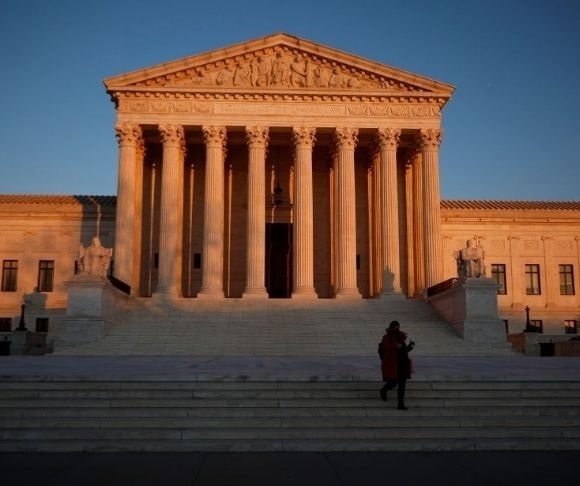The Supreme Court granted a stay of a lower court ruling on Alabama congressional districts Feb. 7. The result in Merrill v. Milligan means that newly drawn lines benefiting Republicans will be in force through the 2022 congressional elections, at least. The district maps were redrawn pursuant to the 2020 census. Groups aligned with the Democratic Party hoped to use a challenge based on the Voting Rights Act to secure a court-ordered redrawing and consequently two districts for Democrats. They won in the district court, but now the Supreme Court has stayed that opinion until the full appeals process proceeds on the merits.
Racial Justice or Democrat Advantage?
 Democrats and Republicans try to advantage their own parties when it comes to drawing congressional district maps. Democrats, however, have an advantage, legally speaking, because black voters generally support the party by outsized percentages. To counter the vestiges of slavery and Jim Crow discrimination, the Voting Rights Act favors the creation of majority-minority districts – where less than 50% of the population is made up of ethnic whites. That those districts are functionally majority Democrat is just a happy accident for Democrats, so they are motivated to challenge any district map that doesn’t favor them using racial gerrymandering.
Democrats and Republicans try to advantage their own parties when it comes to drawing congressional district maps. Democrats, however, have an advantage, legally speaking, because black voters generally support the party by outsized percentages. To counter the vestiges of slavery and Jim Crow discrimination, the Voting Rights Act favors the creation of majority-minority districts – where less than 50% of the population is made up of ethnic whites. That those districts are functionally majority Democrat is just a happy accident for Democrats, so they are motivated to challenge any district map that doesn’t favor them using racial gerrymandering.
Republicans, meanwhile, have the opposite incentive, not for racial discrimination but party advantage. Congressional maps that diffuse areas with heavy Democrat registration numbers (whatever the voter’s race) benefit Republicans. Recent major changes to voting rights cases come courtesy of new technology capable of drawing maps via computer modeling devoid of racial considerations. That’s what Alabama used, and the result was seven districts, including only a single majority-minority district. Democrats two instead and sued, using race and the Voting Rights Act to stake their claim. Only the Democrats’ preferred model of redistricting takes race into account.
 Conservatives, Liberals, and Roberts …
Conservatives, Liberals, and Roberts …
There were three published opinions from the Supreme Court, the majority one authored by Justice Brett Kavanaugh and joined by Justice Samuel Alito, while Justice Elena Kagan wrote in dissent, joined by Justices Stephen Breyer and Sonia Sotomayor. Chief Justice John Roberts dissented from the majority but wrote separately. What about the others? They voted to overturn the lower court ruling but did not sign on to Kavanaugh’s opinion for unstated reasons. The Kavanaugh and Kagan opinions argued back and forth, especially on whether the timing of the election prevented the lower court’s change.
Kavanaugh believed the district court’s order was unacceptable due to the coming elections. He wrote:
“Running elections statewide is extraordinarily complicated and difficult. Those elections require enormous advance preparations by state and local officials, and pose significant logistical challenges. The District Court’s order would require heroic efforts by those state and local authorities in the next few weeks— and even heroic efforts likely would not be enough to avoid chaos and confusion.”
Kagan said the opposite is true – there is plenty of time to make the changes now:
“Even the first day of absentee primary voting (which Alabama has leeway to modify) is March 30, more than two months after the court issued its order.”
“The only delay (of a few weeks) came ‘at the request’ of the State … Alabama is not entitled to keep violating Black Alabamians’ voting rights just because the Court’s order came down in the first month of an election year.”
For his part, Roberts would allow the district court to implement the change order for the 2022 congressional elections but, after that, have the Supreme Court engage in further review.
Although the question of redistricting in Alabama is over for now, as the 2022 midterms approach, this will not likely be the last high-profile gerrymandering case to face the nation’s courts.
~ Read more from Scott D. Cosenza.




